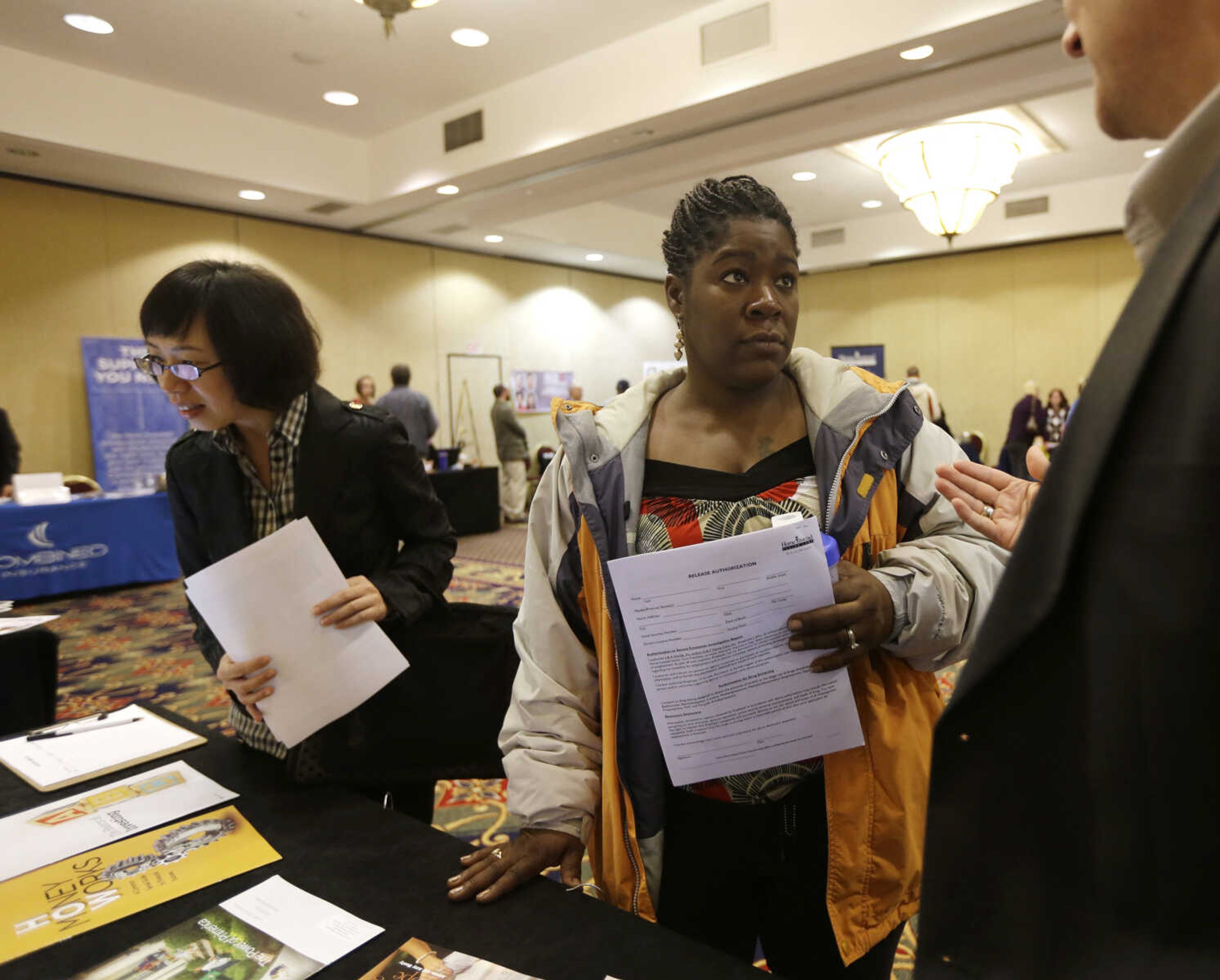US unemployment aid applications drop to 370K
WASHINGTON (AP) -- The number of people seeking U.S. unemployment aid fell sharply last week as a temporary spike caused by Superstorm Sandy has faded. Weekly applications have fallen back to a level consistent with modest hiring. The Labor Department said Thursday that applications dropped 25,000 last week to a seasonally adjusted 370,000...
WASHINGTON (AP) -- The number of people seeking U.S. unemployment aid fell sharply last week as a temporary spike caused by Superstorm Sandy has faded. Weekly applications have fallen back to a level consistent with modest hiring.
The Labor Department said Thursday that applications dropped 25,000 last week to a seasonally adjusted 370,000.
Unemployment aid applications spiked a month ago after Sandy shuttered businesses in the Northeast. Applications jumped to 451,000 in the week ended Nov. 10. People can claim unemployment benefits if their workplaces are forced to close and they aren't paid.
Some analysts were encouraged by how quickly applications have returned to pre-storm levels. Pierre Ellis, an economist at Decision Economics, said the rapid drop suggests companies are quickly re-hiring workers displaced by the storm. Rebuilding and repair efforts could also be creating jobs, he said.
The report is "a positive development for the labor market, which appears to be recovering from the temporary effects of Sandy more rapidly than originally anticipated," Joseph LaVorgna, an economist at Deutsche Bank, said in a note to clients.
The early impact of Sandy can still be seen in the four-week average. It rose to 408,000 last week.
Before the storm hit on Oct. 29, applications had fluctuated this year between 360,000 and 390,000. They topped 400,000 for most of last year. That has coincided with only modest declines in the unemployment rate.
The storm is also likely to depress November's job figures, which the government will report Friday. And fears over looming tax increases and spending cuts, known as the "fiscal cliff," may have also dragged on job gains last month.
Economists expect employers added 110,000 jobs in November, according to FactSet. And they think the unemployment rate will remain 7.9 percent.
Some analysts expect much lower job gains, roughly 25,000 to 50,000, because of Sandy and anxiety over the fiscal cliff.
Still, most analysts say the underlying economy remains healthy and is creating jobs at a modest but steady pace.
Without the depressive effects of Superstorm Sandy and the cliff, many think employers would have added up to 200,000 jobs last month -- even stronger than the solid 171,000 jobs added in October. And it would be better than the 174,000 jobs a month averaged in the July-September quarter.
The number of people continuing to receive unemployment aid also fell. Total recipients dropped almost 225,000 to just under 5 million in the week ended Nov. 17, the latest data available.
Connect with the Southeast Missourian Newsroom:
For corrections to this story or other insights for the editor, click here. To submit a letter to the editor, click here. To learn about the Southeast Missourian’s AI Policy, click here.








